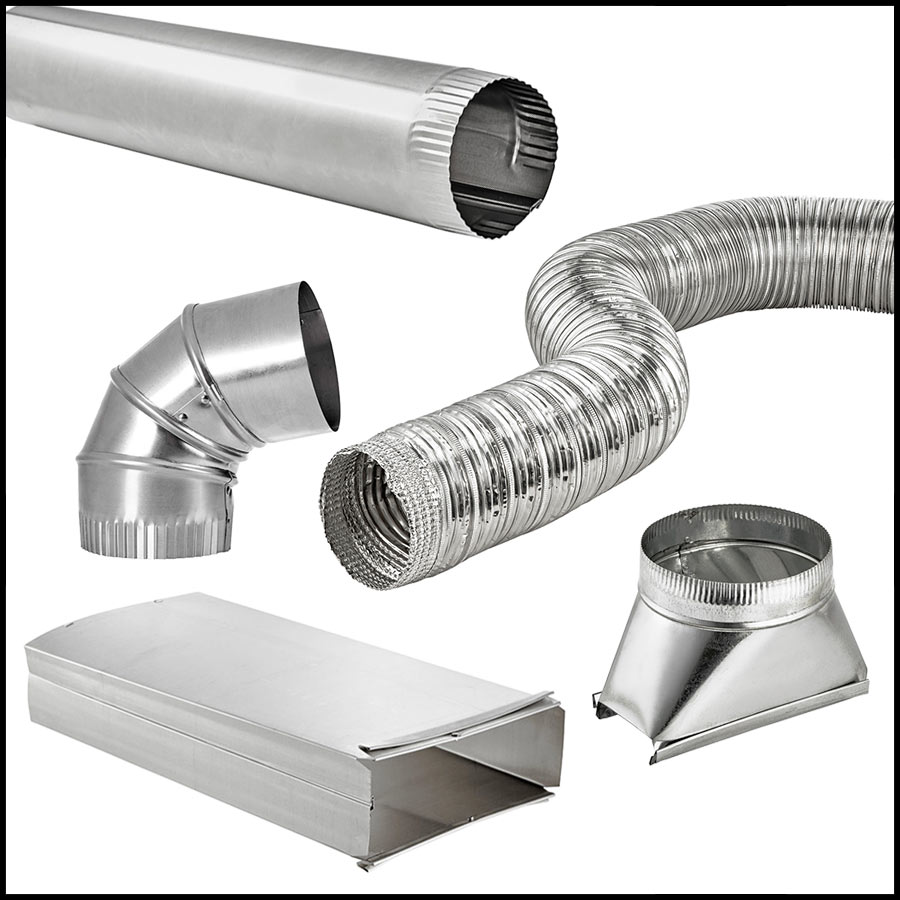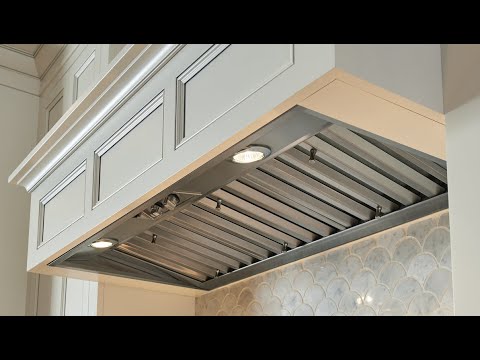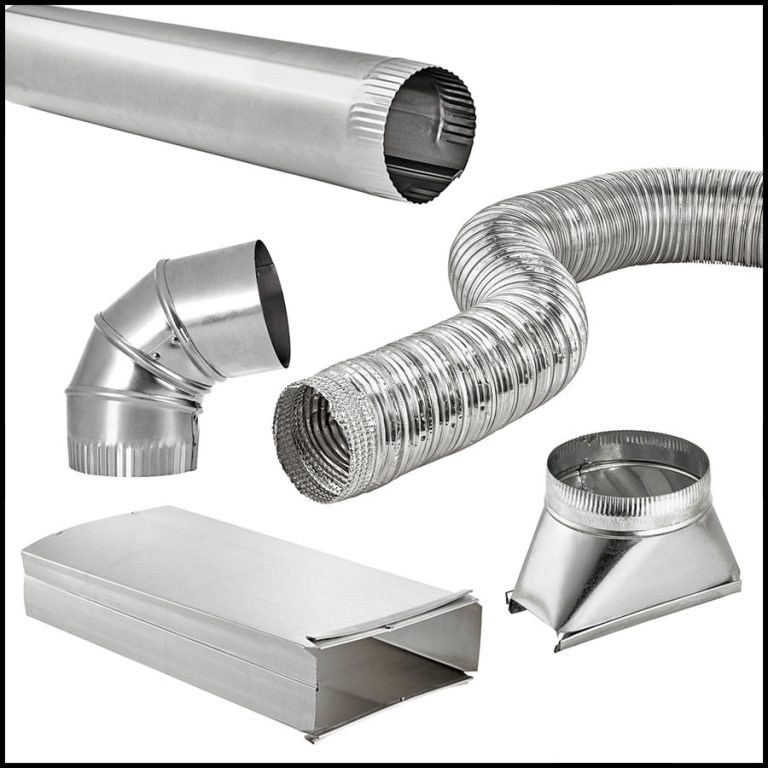Reducing range hood duct size can impact ventilation efficiency. Always consult manufacturer guidelines before making adjustments.
A range hood plays a crucial role in maintaining a clean and safe cooking environment. Proper ventilation removes smoke, odors, and excess moisture from your kitchen. A duct’s size directly affects airflow and efficiency. Smaller ducts may seem convenient, but they can reduce the hood’s performance.
Understanding the implications of duct size is essential for effective kitchen ventilation. Homeowners should prioritize optimal airflow to ensure a healthy cooking space. This article explores the consequences of reducing range hood duct size and offers insights on maintaining effective ventilation. Whether you’re renovating or simply curious, this information will help you make informed decisions for your kitchen.
The Significance Of Range Hood Duct Size
The size of your range hood duct plays a crucial role in kitchen ventilation. A smaller duct can restrict airflow, leading to poor air quality. This can cause cooking smells and smoke to linger longer. Proper duct size allows for effective removal of pollutants.
Choosing the right duct size also affects energy efficiency. A smaller duct can make the range hood work harder. This can increase energy consumption and lead to higher utility bills. Ensuring the right size promotes better performance and saves energy.

Credit: www.lambro.net
Common Range Hood Duct Sizes
Common range hood duct sizes include 6-inch, 7-inch, and 8-inch diameters. The most popular is the 6-inch duct. It works well for many homes. For larger kitchens, 7-inch and 8-inch ducts are better choices. They provide increased airflow.
| Duct Size | Pros | Cons |
|---|---|---|
| 6-inch | Less space needed, easy to install | Limited airflow for larger hoods |
| 7-inch | Better airflow, suitable for medium kitchens | Requires more space, slightly harder to install |
| 8-inch | Great airflow, ideal for large kitchens | Most space needed, more expensive |
Assessing The Need For Duct Size Reduction
Assessing the current kitchen setup is crucial for duct size reduction. Consider the appliance types used. Different appliances require different ventilation.
Check the kitchen size and layout. A small kitchen might need smaller ducts. Ceiling height also affects duct size. Taller ceilings may require larger ducts.
Analyzing ventilation requirements helps ensure safety and comfort. Proper air flow removes smoke and odors effectively. Building codes may dictate certain duct sizes.
Consulting an expert can provide valuable insights. They can recommend the best duct size for your kitchen.

Credit: siriusbrand.com
Benefits Of Reducing Duct Size
Reducing duct size can improve airflow dynamics. Smaller ducts create less resistance. This leads to better ventilation in kitchens.
With enhanced airflow, the range hood operates more efficiently. This means it removes smoke and odors faster. Homeowners enjoy a fresher cooking environment.
Another benefit is lower energy consumption. Smaller ducts require less power to operate. This can lead to significant savings on energy bills.
Less energy use is great for the environment. It helps reduce the carbon footprint of households. Overall, smaller duct sizes offer many practical advantages.
Step-by-step Guide To Duct Size Reduction
To reduce the size of a range hood duct, gather the right materials first. You will need a duct reducer, duct tape, and a saw. A measuring tape is essential for accuracy.
Start by measuring the existing duct size. Mark the new size carefully. Cut the duct using the saw. Make sure the cut is straight and clean.
Next, attach the duct reducer. Use duct tape to seal any gaps. This step ensures proper airflow and prevents leaks. Double-check that everything is secure and tight.

Credit: www.reddit.com
Safety Considerations When Reducing Duct Size
Proper ventilation is crucial for kitchen safety. Reducing duct size may lead to poor air quality. Ensure that the range hood can still effectively remove smoke and odors.
Check local building codes. They often require specific duct sizes for safety. A smaller duct might not meet these requirements.
Preventing fire hazards is essential. A smaller duct can trap grease and debris. This buildup increases the risk of a fire.
Regularly clean the duct and range hood. This helps maintain efficient airflow. Install smoke detectors in the kitchen for extra safety.
Professional Vs. Diy Duct Modification
Modifying a range hood duct can be tricky. Professional help is often needed for complex tasks. Experts ensure proper airflow and safety. They have the right tools and knowledge.
DIY projects can be rewarding. Start by gathering the right tools. Follow instructions carefully. Measure everything accurately to avoid mistakes.
Seek help if you feel unsure. Safety should always come first. Know your limits to prevent accidents.
| Tip | Details |
|---|---|
| Measure Twice | Check all measurements before cutting. |
| Use Quality Materials | Invest in good ducting for better performance. |
| Check Local Codes | Ensure compliance with local building regulations. |
Maintaining Efficiency After Duct Reduction
Regular cleaning keeps your range hood functioning well. Dust and grease build-up can block airflow. Clean filters often to ensure maximum performance. Use warm, soapy water for a thorough wash. Replace filters if they become too dirty.
Check the ductwork for any signs of damage or blockage. Clear any obstructions for effective airflow. Monitor how well your hood removes smoke and odors after the duct size change. Notice any unusual sounds or reduced performance.
Make adjustments as needed to improve functionality. A well-maintained range hood will continue to work efficiently. Keeping an eye on performance helps you catch issues early.
Frequently Asked Questions
Can I Reduce The Size Of My Range Hood Duct?
Yes, you can reduce the size of your range hood duct. However, it’s essential to ensure that the duct size meets the manufacturer’s specifications. A smaller duct may restrict airflow, reducing the hood’s efficiency. Always consult a professional for guidance to avoid potential issues.
What Are The Effects Of A Smaller Duct Size?
A smaller duct size can lead to decreased ventilation efficiency. This may cause lingering odors and smoke in your kitchen. Additionally, it can strain the range hood motor, leading to premature wear. Proper duct sizing is crucial for optimal performance and air quality in your home.
How Do I Choose The Right Duct Size?
To choose the right duct size, consider the range hood’s CFM rating. The general rule is to have a duct diameter that matches the hood’s outlet. Measure your kitchen’s dimensions and consult the manufacturer’s guidelines. Professional advice can also ensure you select the best size for your needs.
Is A Round Duct Better Than A Rectangular One?
Round ducts are generally more efficient than rectangular ones. They allow for smoother airflow and reduce resistance. This can enhance the range hood’s performance and efficiency. However, the choice may depend on your kitchen’s layout and available space.
Conclusion
Reducing range hood duct size can enhance kitchen efficiency. It improves airflow and saves energy. Proper installation and maintenance are crucial for optimal performance. Always consult a professional for guidance on your specific needs. By making informed choices, you can enjoy a cleaner, healthier cooking environment while maximizing your range hood’s potential.



